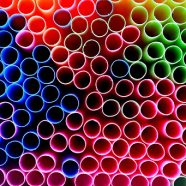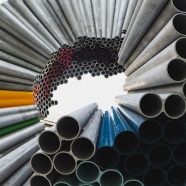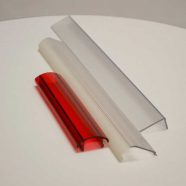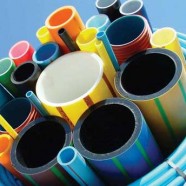What Is Extruded Plastic Tubing?
Extruded plastic tubing is a thin, hollow tube made of plastic usually used for pipes and hoses in plumbing systems or other applications requiring a hollow structure. The manufacturing process involves forcing the plastic through a heated die to produce the desired shape. The finished plastic extruded tubing has a smooth outer surface and a hollow interior that can be filled with air or liquids. The strength of extruded plastic tubing depends on its thickness and weight and the type of material used during manufacture. What Industries Are Extruded Square Plastic Tubing Used for Plastic extruded tubing is used in many industries, such as: Automotive Industry Extruded plastic tubing is used in the automotive industry to make various products, including fuel lines and radiator hoses. The tubing is also used to produce air intake ducts and intercoolers. Construction Industry In the construction industry, extruded plastic tubing is used to make piping for sprinkler systems and fire sprinkler systems. The material can also be used to make plumbing pipes, which are ideal because they are lightweight yet strong enough to withstand high pressures and temperatures. Agriculture Industry The agriculture industry relies heavily on extruded plastic tubing because it’s durable and easy to clean, which makes it especially useful for storage tanks used for storing animal feed or water. By using extruded plastic tubing in these tanks, farmers can easily access any part of their equipment without having to remove it from their property. Food Packaging Industry The food packaging industry uses extruded plastic tubing to make various food and drink containers. Plastic tubes are used to manufacture bottles, jars, cans, and other containers for beverages, dairy products, and other liquids. The tubes provide an airtight seal that protects these products from contamination or degradation due to oxygen exposure. Plumbing and HVAC Systems Industry Plumbing and HVAC systems are two of the most common industries that use extruded plastic tubing. Plumbing systems use polyvinyl chloride (PVC) pipes for water supply lines, drain lines, and venting systems. HVAC systems rely heavily on extruded polyethylene (PE) pipe to transport refrigerants or gasses like propane or natural gas through their system. Medical Devices Industry Medical devices such as stents, catheters, and IV bags are used in hospitals worldwide every day. These products must be highly durable to withstand high pressures, temperatures, and exposure to chemicals found in hospitals without breaking down over time. Extruded plastic tubing is often used in these medical devices because it meets these requirements while also being FDA approved for use with human bodies. What Are the Benefits of Plastic Extruded Tubing Extruded plastic square tubing is an excellent option for many industrial and commercial applications. The following are some of the benefits of extruded square plastic tubing: Lightweight Plastic extruded tubing is lightweight and easy to handle. It can be easily cut, welded, and joined together without losing strength or quality. The material is also very strong and durable, making extruded plastic square tubing an excellent choice for many applications. Flexible Extruded plastic square tubing is flexible and can bend in any direction without breaking or kinking like other types of tubing. This makes it ideal for use in tight spaces where traditional materials would not fit or be able to bend as easily. Corrosion Resistant Plastic extruded tubing is not susceptible to corrosion like other types of metal. It does not rust or corrode like steel or aluminum, making it an excellent choice for use in areas exposed to moisture or harsh environments, such as septic tanks, wastewater treatment plants, farmlands, and golf courses. Durable The durability of...
Read MoreHow is Plastic Tubing Extruded?
How is plastic tubing extruded? This question is best answered by first understanding what plastic tubing is. Plastic tubes are hollow, cylindrical shapes made from thermoplastic or thermosetting plastic. It can be either rigid or flexible and is used in many different applications. To create plastic tubes, manufacturers begin with a large cylinder of plastic called an extruder which heats the plastic until it is soft enough to be forced through a small hole called a die. As the plastic emerges from the die, it is cooled and takes on the shape of the die. The tubing is then cut to the desired length and cooled completely. What Are Its Applications? Plastic tubing extruded can be made from many different types of plastic, including PVC, ABS, and polyethylene, for various applications in numerous industries, including aerospace, construction, electronics, and more. The type of plastic used will depend on the intended use of the tubing. For example, PVC tubing is often used in plumbing applications because it is resistant to corrosion. Polyethylene tubing is often used in food and beverage applications because it is FDA approved for contact with food. The plastic extrusion process can be customized to produce plastic tubes with different features. For example, manufacturers can add colorants to the plastic before extrusion to produce colored tubing. They can also add UV inhibitors to the plastic to prevent the tubing from yellowing over time. Tubing can also be made with different wall thicknesses to meet the needs of various applications. What Are The Benefits Of It? Plastic tubing extruded can be formed into various shapes and sizes to meet the needs of different applications. For example, small-diameter tubing can be used in medical applications, while larger-diameter tubing can be used in construction applications. However, the benefits don’t end there. Plastic tubing extrusion is also: Customizable The plastic extrusion process can be customized to produce plastic tubing with different features. For example, manufacturers can add colorants to the plastic before extrusion to produce colored tubing. They can also add UV inhibitors to the plastic to prevent the tubing from yellowing over time. Tubing can also be produced with different wall thicknesses to meet the needs of various applications. Versatile Plastic tubing extruded is carried out in many different types of plastic, including PVC, ABS, and polyethylene. The type of plastic used will depend on the intended use of the tubing. For example, PVC tubing is often used in plumbing applications because it is resistant to corrosion. Polyethylene tubing is often used in food and beverage applications because it is FDA approved for contact with food. Durable A plastic tube is a durable product that withstands a lot of wear and tear, making it suitable for applications where it’s exposed to high temperatures or chemicals. Resistant To Corrosion Some plastic tubes, such as PVC tubing, are resistant to corrosion. This makes them ideal for applications where they will be exposed to chemicals or other corrosive materials. Easy To Install Plastic tubes can often be glued or welded into place, making them a popular choice for applications needing a permanent connection. How Keller Plastics Is The Best Plastic Extruded Tubing Manufacturers Keller Plastics manufactures custom plastic tubes for many industries. We use the plastic extrusion process to produce various shapes and sizes of plastic tubes. The extrusion process can be customized to produce tubing with different features, such as wall thicknesses or added UV inhibitors. We use high-quality materials to produce our tubing and offer various finishes to meet our customers’ needs. Contact us today to learn more about our plastic...
Read MoreWhat Are Nanoplastics?
Nanoplastics are a new type of plastic that differs from conventional plastic nanocomposites in several ways. First, they can manufacture them at the nanoscale, meaning they can arrange their particles in patterns that do not occur naturally. It allows them to have properties that differ significantly from other types of plastic and enables nano-plastic materials to have particular properties based on their makeup. For example, some plastic nanocomposite materials can efficiently conduct electricity, while others are good insulators. Nanoplastics are a newer plastic category still in the research and development stages. They have a variety of potential applications in many fields, from construction to medicine. While their applications are yet to be fully known, their potential to revolutionize the world of plastics is vast. One of the first types to be created was nano-polystyrene, and it quickly became apparent that it had several uses, such as fabricating transistors and other electronic devices. What Are Nanoplastics Made Out Of? They are made from microplastic particles arranged in a crystalline structure that allows them to be incorporated into plastics. Just as their species and environment dictate the size of humans’ bones and teeth, so does the size of nano plastics – in all cases, the particles are controlled by the size and shape so that they can readily assemble into solid objects. It is important to note that although nanotechnology polymers make nano plastics, they are not identical to nanomaterials. Nanomaterials are materials that have microscopic precision, and they can typically be in powder, bullets, pills, and other objects. Nanoplastics, on the other hand, only use naturally occurring particles, but their arrangement into a crystalline structure allows them to be incorporated into plastics nanocomposites or other objects. What Are The Benefits Of Nanoplastics? The primary benefit of nanoplastics is their strength and durability. Because of their small size and crystalline structure, they can pack more atoms into a given space while at the same time having much greater tensile strength than other plastics. They also have a shallow center of gravity and tend to be quite stiff and inflexible. However, nanoplastics offer numerous advantages on top of strength and durability, including: High Strength These materials’ high strength and low weight density make them ideal for transportation applications. They can be used as interiors or exteriors in vehicles, sidewalks, or subway stations. You can also use them to make cargo containers for many uses like chemicals, food, and even people. Efficient Manufacturing Because the arrangement of particles is exact and specific, the manufacturing process only needs minimal steps. It means that market time for these materials is short, and they can fully develop and on the market within five or ten years. Adaptability The small size of nano plastics allows their use in many applications that are impossible with conventional plastics. Because they are manufactured in much smaller quantities than other plastics, they are easier to incorporate into electronic devices, batteries, clothing, and even retinas. Their small size also makes them very useful in applications that require high precision. Transparency Nanoplastics are nearly transparent to specific wavelengths of light, allowing them to create explicit plastic materials that can handle more light than conventional plastics. They are also non-toxic and very recyclable, which is a significant improvement over many other types of plastics currently used in industry. Smart Self-healing Properties You can use the materials in many different ways, but they are instrumental in creating self-healing sealants that can heal themselves repeatedly, even when damaged. Biodegradable Bio-based polymers that match the properties of our workhorse plastics but are biodegradable are another potential application...
Read MoreYour Guide To Polycarbonate
Polycarbonate can be thought of as somewhat similar to glass. It’s a transparent material that can be extruded to create a number of commercial products. Some of the most popular include bulletproof glass, eyeglass lenses, PPE, and exterior lighting fixtures. This material is used in situations where strength and impact-resistance are required. Polycarbonate is a strong material that is resistant to both high temperatures and impact. Many prefer to use polycarbonate instead of traditional glass because it doesn’t shatter. A Thermoplastic Material Polycarbonate is well-known for being a thermoplastic material. Any thermoplastic material is capable of being heated up and formed into a product. Once a melting point is reached and the polycarbonate material turns into a liquid, it can be shaped into almost any product. Thermoplastic materials can be melted, cooled, and reheated all over again without causing any major degradation to the material. This property makes thermoplastics like polycarbonate great for manufacturing as they can be recycled over and over again- a very important feature in today’s environment. What Is Polycarbonate Used For? Keller Plastics produces many different polycarbonate extrusions that companies use throughout the country. Since polycarbonate is very transparent, light-weight, and sustains its integrity in high-impact situations, it’s used in a variety of applications in almost all industries. Some of the most common products made with extruded polycarbonate include: Windows Eyeglass Lenses Machine Guards LED Light Pipes Wall Protectors Display Cabinets Polycarbonate extrusions are very popular as a convenient alternative to glass. While most polycarbonate is left in its natural state of transparency, it can be tinted. One of the most desired applications is tinting the polycarbonate to naturally reduce the sun’s glare on outdoor signs and light covers. Polycarbonate Grades And Additives Extruding polycarbonate is not always easy but Keller Plastics extrudes it every day. The material must be dried thoroughly before extruding and Keller Plastics has special dryers to do this. Keller Plastics also runs a special UV stable material for solar panels that are expected to last over 20 years. Many other additives can be utilized in polycarbonate production to achieve various results for different applications. Some common polycarbonate grades that you’ll find on the market today include: Glass-Filled General Purpose Light Diffusing Flame Inhibiting Low Flammability Antimicrobial Bullet Resistant UV Blocking Are There Any Disadvantages Of Polycarbonate? While polycarbonate has many strengths, like high impact resistance, it does have one major disadvantage. The material is susceptible to scratching. More recently, Keller Plastics, alongside other manufacturers, have started coating the polycarbonate products with a scratch-resistant layer to ensure optimal protection. Contact Keller Plastics today to get all of your polycarbonate products. We offer free tooling for all new...
Read MoreProducts Produced With Plastic Extrusion
When melted plastic is forced into a die to create plastic profiles, the resulting products are known as plastic extrusions. The type of plastic preferred by manufacturers is known as thermoplastics. These are ideal for plastic extrusion as this type of material can be easily melted and cooled down into a new form without compromising its strength. The most common types of thermoplastics used by plastic extrusion manufacturers are PVC, polypropylene, ABS, Polycarbonate, and Nylon. Depending on the end application, one material will be preferred over the other. Keller Plastics uses many different materials to create fully customized products for any application. Tubing Keller Plastics produces various tubes and pipes. These products can be as small as a drinking straw to as large as city sewer pipes. This tubing may be responsible for transporting everything from gasses to liquids. Apart from crafting custom lengths and sizes, Keller Plastics can also produce tubes with different wall thicknesses. Profiles Plastic Extrusions can produce cross-sectional shapes to a variety of specs. These shapes can be produced in many different sizes, depending on the end product. Some examples of profiles include railing, trim, and rain gutters. Solid Extrusions Not all plastic extrusion products are hollow. Rather, there are solid extrusions that can be used to create products that are maintenance-free and weatherproof. Some examples of these products include outdoor furniture, benches, deck planks, and fence posts. Film And Sheets Plastic extrusion manufacturers can produce thin film and sheeting products for consumers. Some of the thinnest products include window glazing, protective screens, and blister packs. These can be used for tinting car windows, protecting smartphone screens, and packaging medication. Insulation When it comes to protecting electrical products, plastic extrusion is the most popular process used. The plastic insulation that you’ll find around wires is crafted via the plastic extrusion process. This works by having a wire put into a die. Then, the plastic product is melted down and forced into the die. Once cooled, this creates a plastic insulation layer around the wire to ensure it’s waterproof and abrasion-resistant. If you need help with plastic extrusions, give Keller Plastics a call. We’ll bring our experience to the table to provide you with a variety of plastic extrusion products that meet your needs. We’ll even provide you with free tooling so that you can be assured that you’ll get the products that you desire. Call us Today – (603)...
Read More








